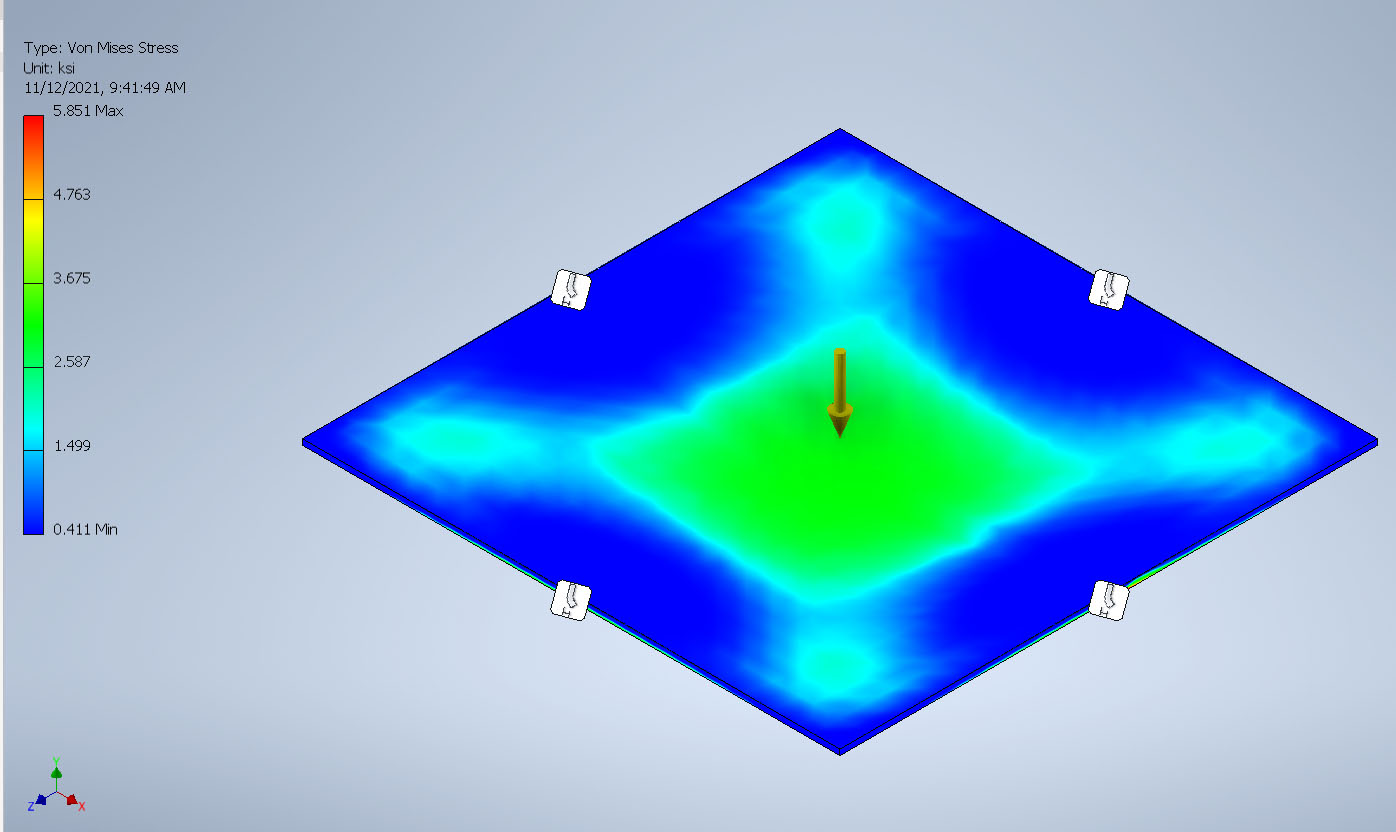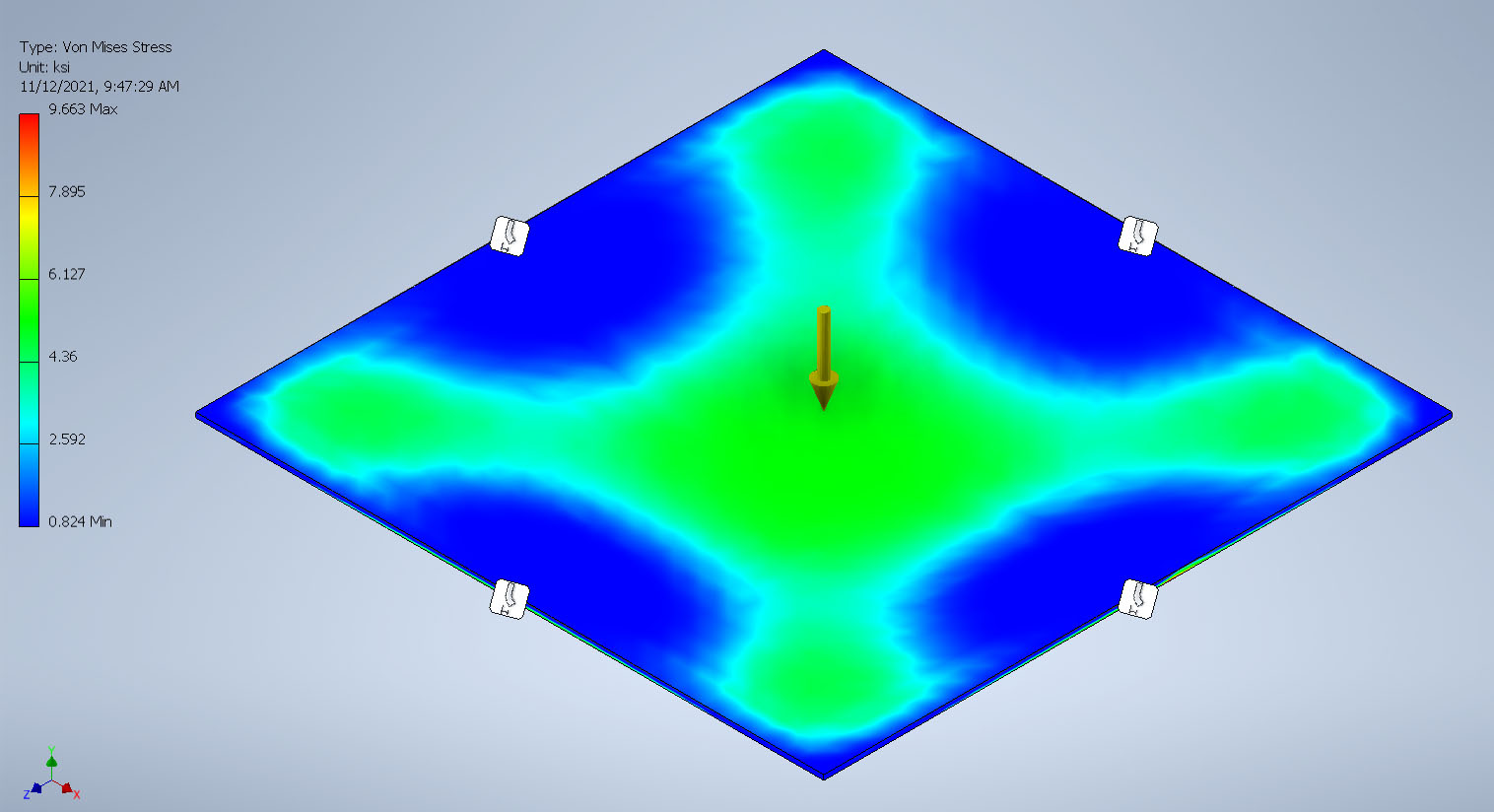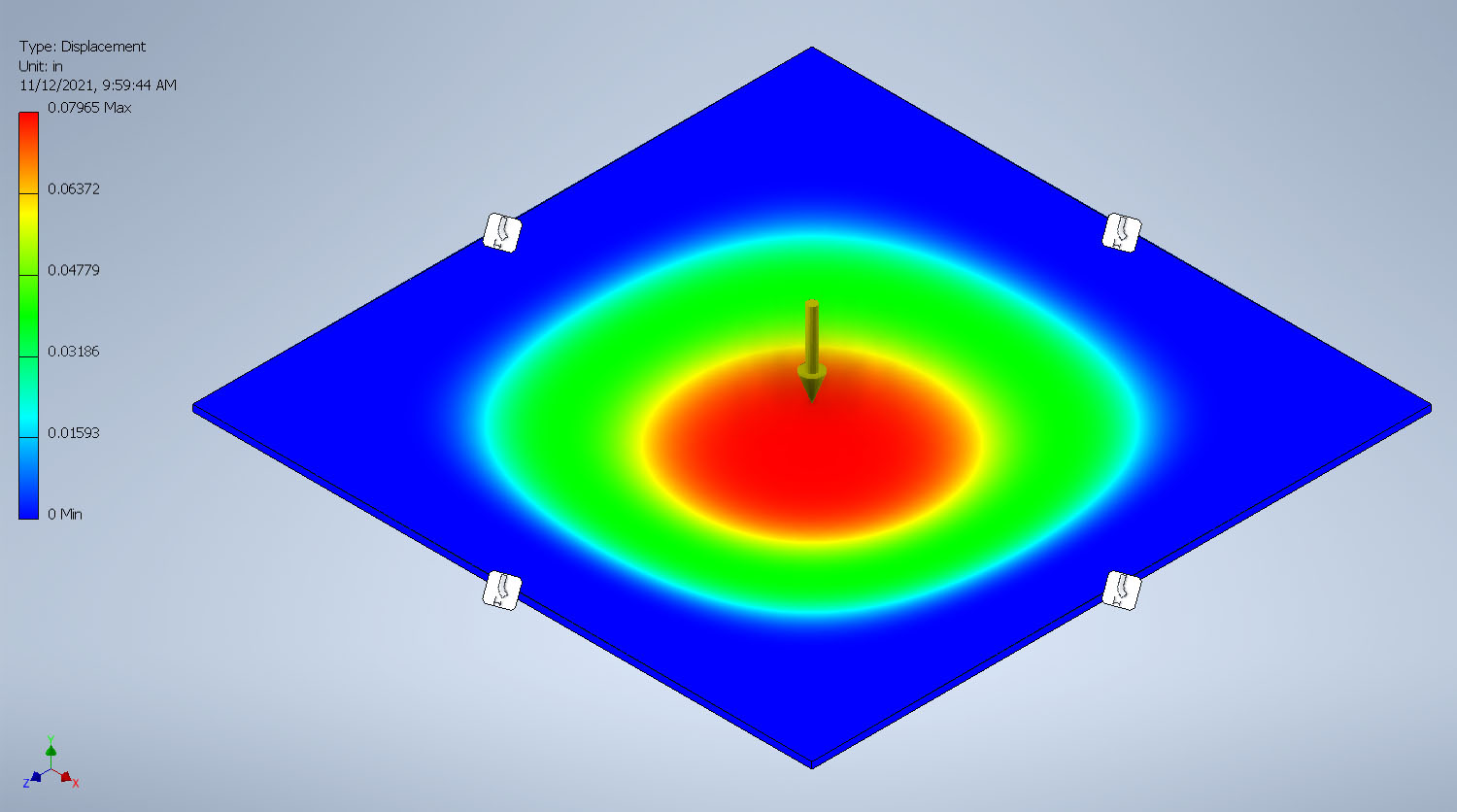Posted by Darren Castine on Nov 13th 2021
Aluminum vs Steel | Which material should you choose?
- Stress Analysis - The thicker aluminum plate came out with a maximum stress of 5.851ksi and had an average of about 3ksi where the load was applied.

As expected, the steel plate being thinner, came out with a maximum stress of 9.663ksi and averaged around 5ksi where the load was applied. This is simply due to it being thinner material.
- Next we will look at the Safety Factor of the two materials. This takes into account all the material properties of each, and calculates out an overall factor of safety, i.e. how close are we to the limits of the material and will it deform permanently or spring back to it's original shape?
The 1/4" Aluminum shows a minimum Safety Factor of 6.82 but in reality where the load is placed it is much greater than that. So in these conditions, it could theoretically take 6,820 lbs of pressure before it is permanently deformed!
The 3/16" thick mild steel shows a minimum safety factor of only 3.11 and in the area of the actual load it's still greater, but less than the Aluminum at around 7.5.
-
Finally we can look at actual deflection, or how much the material will physically move at the point of the load. The aluminum will deflect about 0.080" at most:

While the steel only deflects about 0.061" as shown below:
-
What does all of this data and the crazy looking pictures mean? Simply put, the aluminum will deflect very slightly more than the steel (but only by about 20 thousandths of an inch!!) however, it is actually less likely to remain bent and more likely to spring back to it's original shape.
Other factors - Aluminum will get surface scratches easier than steel, and will gouge a little easier. If you are trying to slide over a rock, the aluminum could possibly gouge and "stick" more than the steel.
WEIGHT!!!! Here's another big factor, although not related to strength. This size aluminum plate weighs 14.05lbs while the thinner steel plate comes in at 30.63lbs! That means the thicker aluminum is actually a little less than half the weight!!!
Rust - Aluminum wins hands down here. Even though aluminum will oxidize over time, it is much slower than the rusting that steel will do. We like to finish either option - be that by paint, powdercoat, anodizing or whatever you choose, however when something gets scratched (and of course it inevitably will) it will expose the bare metal underneath and steel will need to be repaired right away.
- Conclusion - Personally we think that the Aluminum option has more than enough benefits to outweigh the few things steel does better. But we leave that up to you and will still offer both options for some of our products. Definitely give aluminum some more thought though!!
Hey guys, I wanted to create a basic comparison between Mild Steel and Aluminum so that everyone can make an informed decision on what material to choose. I decided to run a very basic FEA analysis on two options that we offer on products such as our skidplates - 3/16" Mild Steel and 1/4" Aluminum. These are somewhat close in price and strength (although pricing on each has been changing on a daily basis!)
I chose a 24" by 24" square for size, and a centered load of 1,000 lbs (very loosely based on an area of skidplate and part of a vehicle on an obstacle) with all sides simply supported.
- Darren

